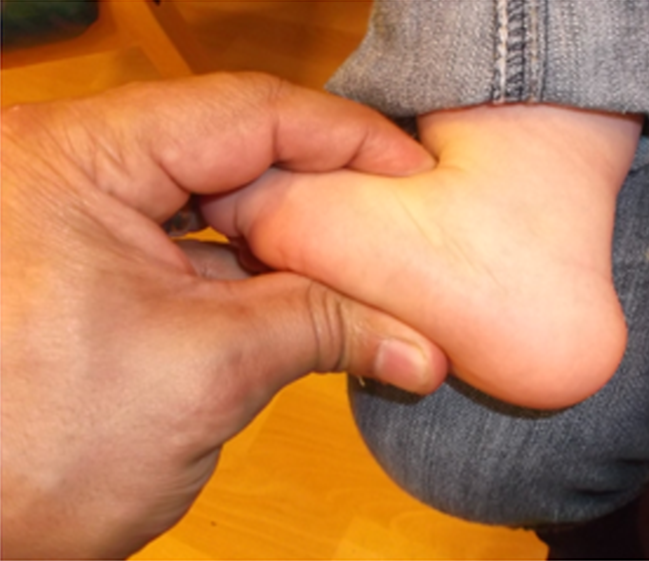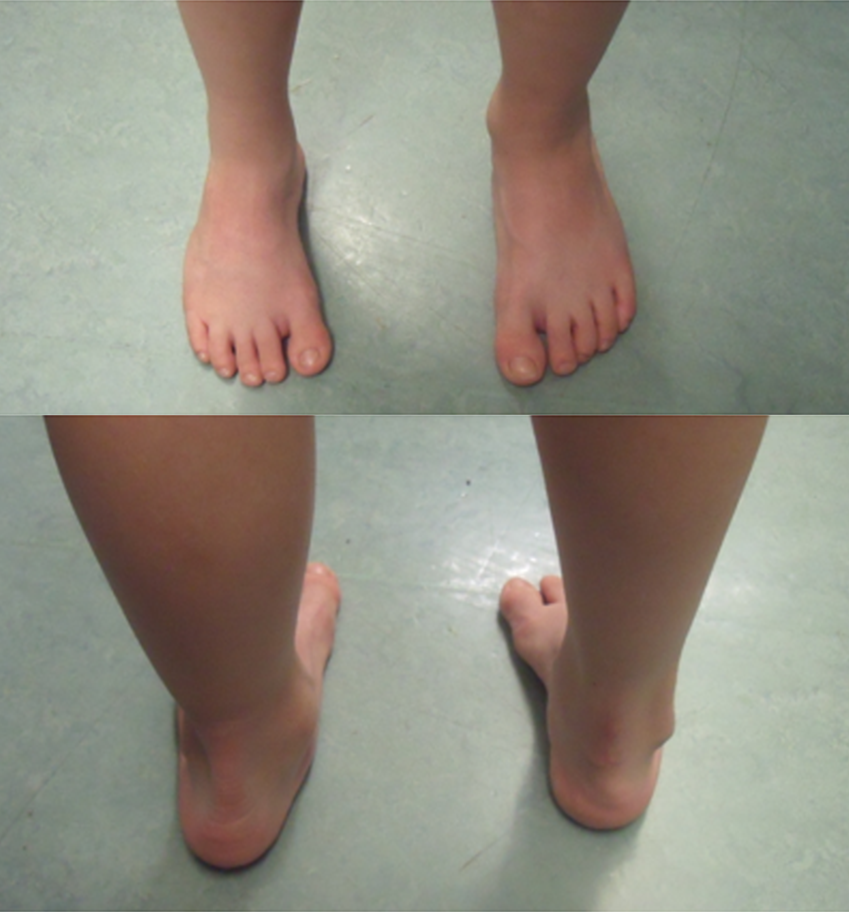- Parents may notice in toeing if child presents after walking age
- Forefoot is adducted relative to the hindfoot
- Viewed from the plantar surface the sole of the foot appears like a bean
- Lateral border of the foot is convex
- Medial border of the foot is concave
- Base of the 5th metatarsal may be more prominent than normal
- Space between the 1st and 2nd toe is also increased
- Ankle and sub-talar joints’ movement is normal
- It is important to undertake a thorough clinical assessment to rule out plagiocephaly, torticollis and DDH
- It is also important to assess lower limb rotational profile to rule out other causes of internal rotation of the foot
- However MA may co-exist with a degree of Internal tibial torsion
- It is important to take a full history as MA can present as a sequel following treatment for previous CTEV

Clinical photograph of metatarsus adductus.

Hind foot is mobile and there is no equinus of the heel which is an important differentiating sign form clubfoot.

Metatarsus adductus can be part of residual club foot deformity (look for the foot size, hind foot deformity and any surgical scarring).